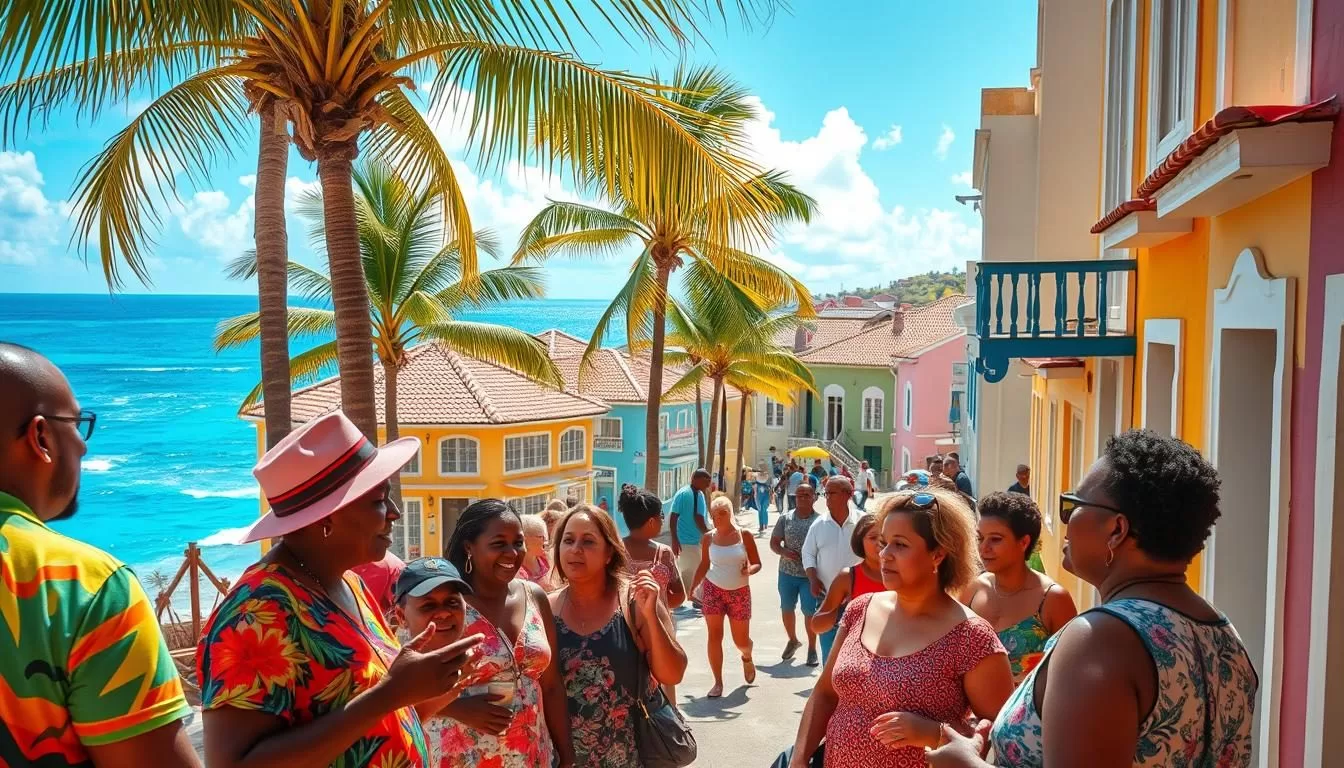✓ Accommodations✓ Flights✓ Rental Cars✓ Tours & Activities
Nestled in the heart of the West Indies, this small island is a fascinating blend of cultures and languages. With a population representing over 100 nations, it’s no surprise that communication here is as diverse as its people.
On the Dutch side, Sint Maarten, English dominates daily life, making it easy for visitors to navigate. Dutch, however, plays a key role in government and legal matters. Meanwhile, the French side embraces French as its official language, with Creole adding a local flavor.
Whether you’re exploring bustling markets or relaxing on pristine beaches, you’ll find that most residents involved in tourism are fluent in English. This linguistic harmony reflects the island’s rich history and welcoming spirit.
Understanding the Linguistic Landscape
The linguistic tapestry of this island is as vibrant as its culture. With a mix of English, Dutch, French-based Creole, Spanish, and Papiamento, communication here is a fascinating blend of influences. This diversity reflects the island’s rich history and its role as a cultural crossroads.
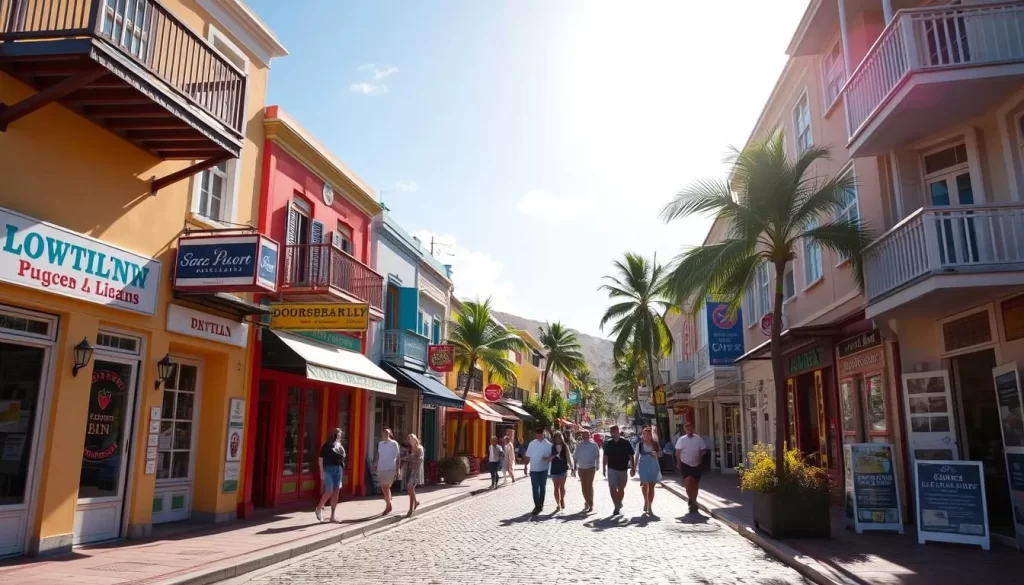
An Overview of Language Diversity on the Island
On one side, Dutch and English dominate, especially in government and legal matters. On the other, French is the primary language, with Creole adding a local touch. This duality creates a unique linguistic situation where multiple languages coexist seamlessly.
Tourism has played a significant role in shaping communication. Many residents involved in tourism are fluent in English, making it easy for visitors to navigate. This adaptability highlights the island’s welcoming spirit.
Key Influences Shaping the Local Dialects
Historical migrations and colonization have left a lasting impact. The Dutch and French influences are evident in the official languages, while Spanish and Papiamento reflect the island’s Caribbean connections. These elements combine to create a rich linguistic heritage.
Cultural exchanges have further enriched the dialects. For example, Creole incorporates elements from African, French, and indigenous languages. This blend makes the island’s communication as diverse as its people.
| Language | Primary Use | Influence |
|---|---|---|
| English | Tourism, daily communication | Colonial history |
| Dutch | Government, legal matters | Dutch colonization |
| French | Education, official documents | French colonization |
| Creole | Local communication | African and French influences |
| Spanish | Immigrant communities | Caribbean connections |
| Papiamento | Cultural exchanges | Dutch Caribbean roots |
This linguistic harmony is a testament to the island’s ability to adapt and thrive. Whether you’re exploring markets or relaxing on the beach, you’ll experience a world where languages blend effortlessly.
St. Martin – St. Maarten: Official and widely spoken languages
The island’s linguistic diversity is a reflection of its rich cultural heritage. With a mix of official and widely spoken languages, communication here is both practical and fascinating. This blend of languages not only connects people but also tells the story of the island’s history.
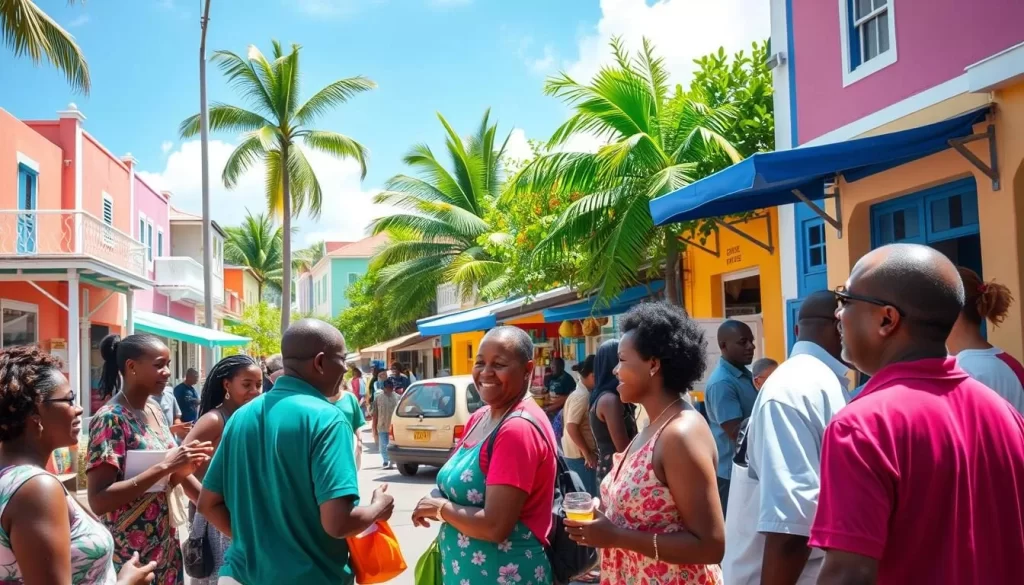
Official Languages: Dutch and English
Dutch serves as the primary language for government and legal matters. It’s a key part of the island’s administrative framework. On the other hand, English is the most commonly spoken language among the population. Its widespread use makes it easy for visitors and locals to communicate.
English’s dominance is largely due to the island’s role in tourism. Many residents involved in this sector are fluent in English, ensuring smooth interactions with visitors. This adaptability highlights the island’s welcoming spirit.
Additional Languages and Their Roots
Beyond Dutch and English, other languages add to the island’s linguistic richness. Papiamento and Spanish are commonly spoken in many households. These languages reflect the island’s connections to the Caribbean and Hispanic communities.
Historical migrations have also shaped the local dialects. For example, Creole incorporates elements from African, French, and indigenous languages. This blend creates a unique linguistic heritage that’s as diverse as the island itself.
| Language | Primary Use | Historical Influence |
|---|---|---|
| Dutch | Government, legal matters | Dutch colonization |
| English | Daily communication, tourism | Colonial history |
| Papiamento | Local households | Caribbean connections |
| Spanish | Immigrant communities | Hispanic influences |
| Creole | Local communication | African and French roots |
This linguistic harmony is a testament to the island’s ability to adapt and thrive. Whether you’re exploring markets or relaxing on the beach, you’ll experience a world where languages blend effortlessly.
Historical Influences on Language and Society
Languages here tell a story of conquest, migration, and cultural fusion. The island’s linguistic landscape is a direct result of its colonial past. Over centuries, Dutch, French, and Spanish influences have shaped the way people communicate.
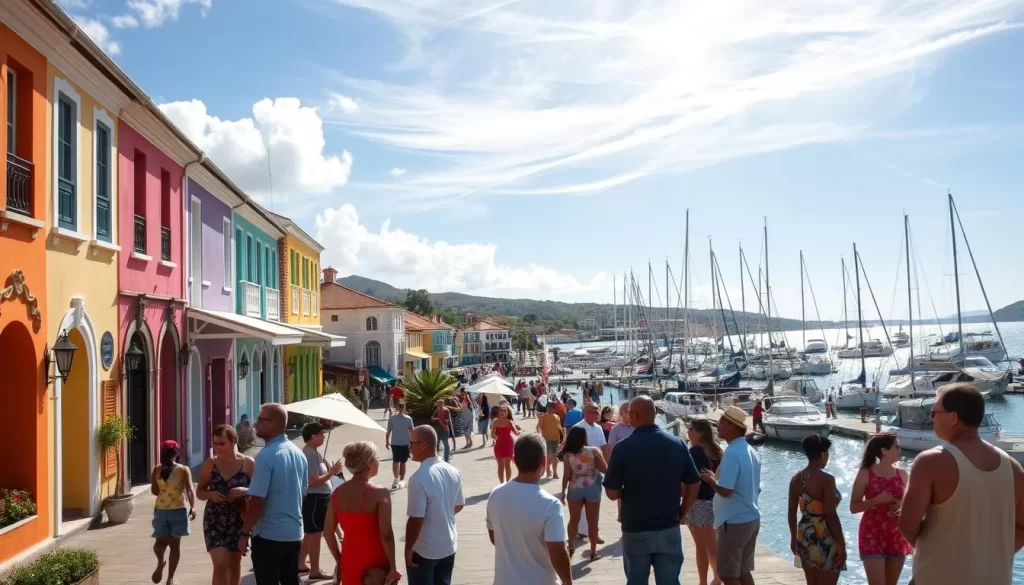
The Colonial Legacy: Dutch, French, and Spanish Impacts
Colonization left a lasting imprint on the island. The Dutch introduced their language, which remains central to government and legal systems. French influence is evident in education and official documents, while Spanish connects the population to broader Caribbean roots.
The Treaty of Concordia in 1648 split the island into two territories. This division cemented diverse cultural and linguistic practices. Today, these colonial legacies continue to shape daily life and communication.
Immigration and Cultural Exchanges Over Time
Historical migrations have further enriched the island’s linguistic tapestry. People from over 100 nations have settled here, bringing their languages and traditions. This blending of cultures has created a unique societal language landscape.
For example, elements of New York English contrast with local dialects, reflecting the island’s global connections. Immigration continues to influence how people speak and interact, making communication here as diverse as its people.
Language and Communication in Tourism and Business
Effective language use is a cornerstone of the island’s thriving tourism industry. With a population representing over 100 nations, clear communication bridges the gap between locals and visitors. This linguistic harmony ensures a seamless experience for everyone.
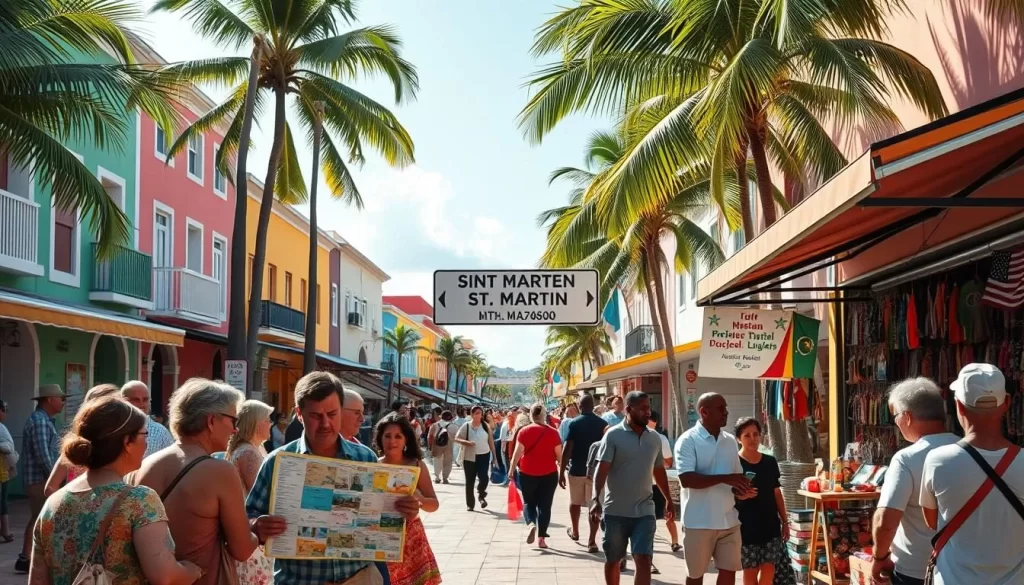
Language’s Role in Enhancing Visitor Experience
English dominates daily interactions, especially in tourism. Nearly every resident involved in this sector speaks it fluently. This makes it easy for visitors to navigate the island, from booking accommodations to exploring local attractions.
The government supports this multilingual environment by encouraging language education. This ensures that locals can communicate effectively with tourists from diverse backgrounds. Such efforts highlight the island’s commitment to hospitality.
Historical shifts in language usage have also shaped tourism. Over time, English became the primary tool for connecting with visitors. This evolution reflects the island’s adaptability and global appeal.
Practical examples abound. At major transportation hubs, staff are trained to assist in multiple languages. This attention to detail enhances visitor satisfaction and boosts business success.
In essence, language differences enrich the visitor experience. They create a vibrant, inclusive atmosphere that keeps tourists coming back. This linguistic diversity is a testament to the island’s welcoming spirit.
Regional Contributions to Contemporary Language Use
The island’s linguistic evolution is deeply rooted in its regional connections. Over time, Caribbean and West Indies cultures have significantly influenced how people communicate here. This blend of global accents and local vernaculars creates a unique linguistic environment.
Impact of Caribbean and West Indies Cultures
Caribbean cultures have left a lasting mark on the island’s language. For example, elements of Creole reflect African and French influences. These dialects are widely spoken in local communities, adding depth to daily communication.
Migration from the West Indies has also introduced diverse language elements. People from neighboring islands bring their own accents and expressions. This enriches the linguistic tapestry of the island.
The Blend of Global Accents and Local Vernaculars
Global accents, such as those from New York, blend seamlessly with local dialects. This mix is especially evident in business circles. For instance, Indian and Chinese language elements are increasingly integrated into professional settings.
The government has adapted policies to support this linguistic blend. Educational programs encourage multilingualism, ensuring that the population can communicate effectively in diverse settings.
| Language Element | Origin | Influence |
|---|---|---|
| Creole | Caribbean | Local communication |
| New York Accent | Global | Business and tourism |
| Indian Languages | Immigrant Communities | Professional settings |
| Chinese Dialects | Immigrant Communities | Trade and commerce |
This regional diversity has shaped communication methods on the island. Whether in casual conversations or formal settings, the blend of accents and dialects reflects its rich cultural heritage. To learn more about the island’s unique linguistic landscape, visit Saint Martin’s Wikipedia page.
Conclusion
The island’s multilingual identity is a testament to its rich history and cultural fusion. Colonial influences and immigration have shaped the way people communicate here. From Dutch in government to English in tourism, each language plays a vital role in daily life.
Caribbean and West Indies cultures have added depth to the local dialects. This blend creates a unique linguistic environment that reflects the island’s diversity. It’s a place where global accents meet local vernaculars, enriching every conversation.
Efforts by the government, businesses, and residents ensure this dynamic communication landscape thrives. Whether you’re exploring markets or relaxing on the beach, you’ll experience this linguistic harmony firsthand. For more practical travel tips, visit St. Maarten’s traveler information page.
Appreciate the island’s linguistic diversity as a cultural asset. It’s a living reminder of its past and a bridge to its future. Every word spoken here tells a story of resilience and unity.
The above is subject to change.
Check back often to TRAVEL.COM for the latest travel tips and deals.
